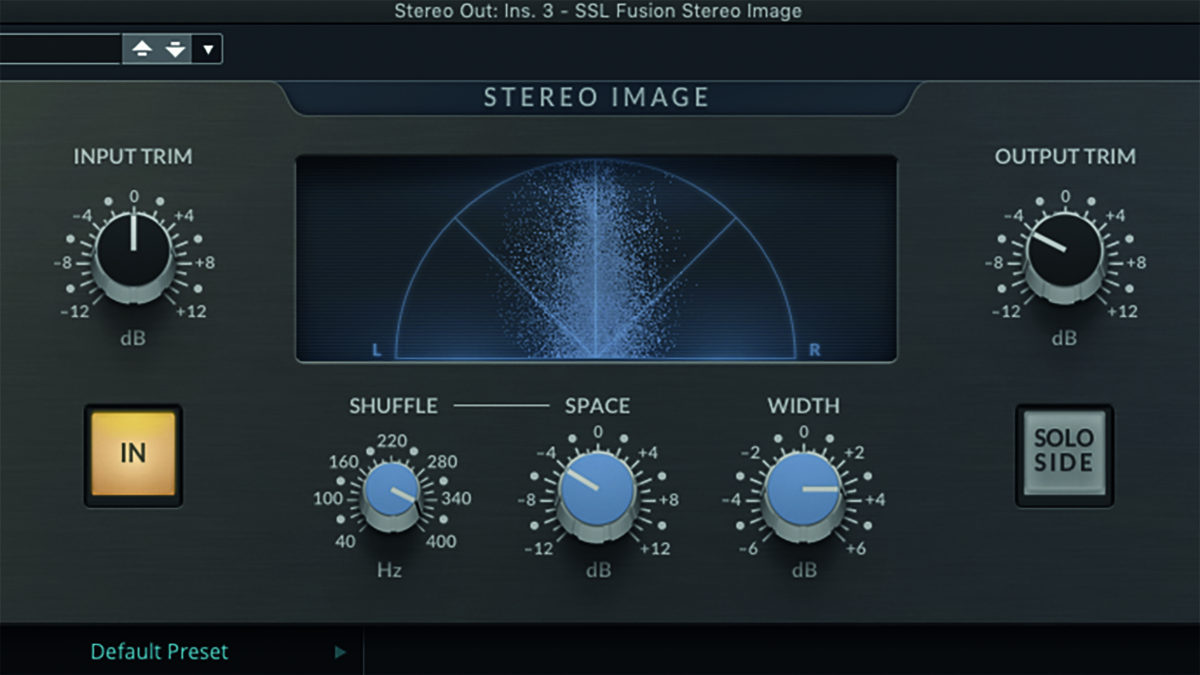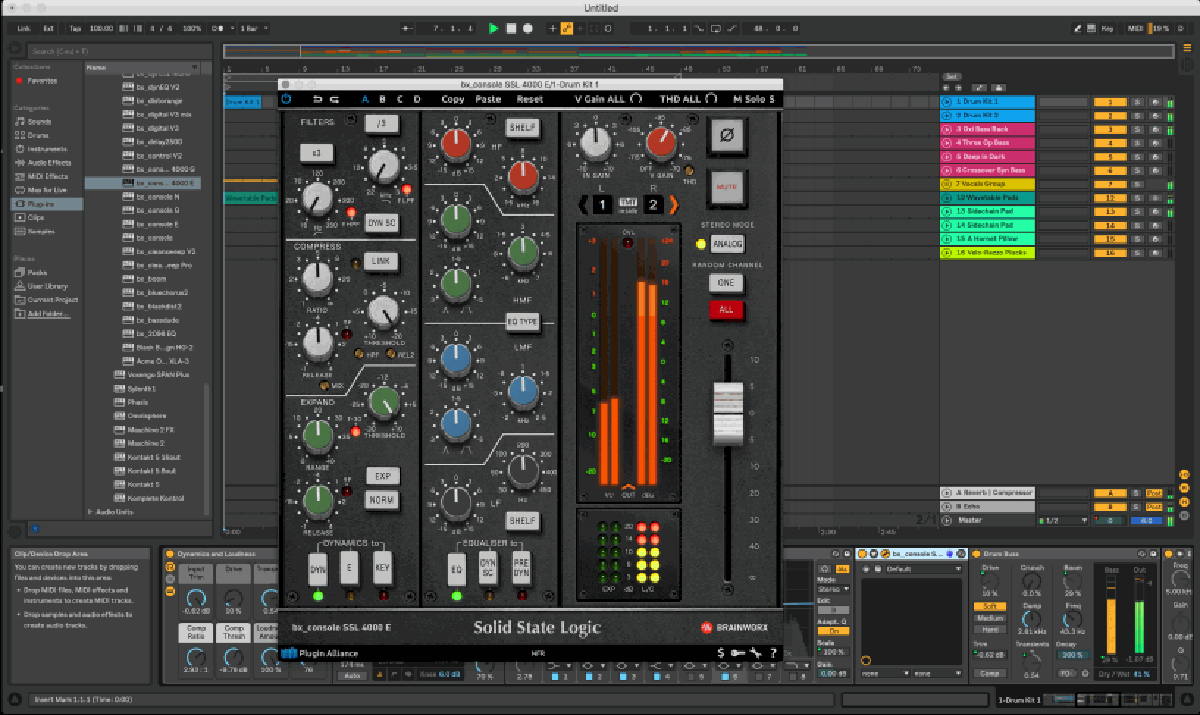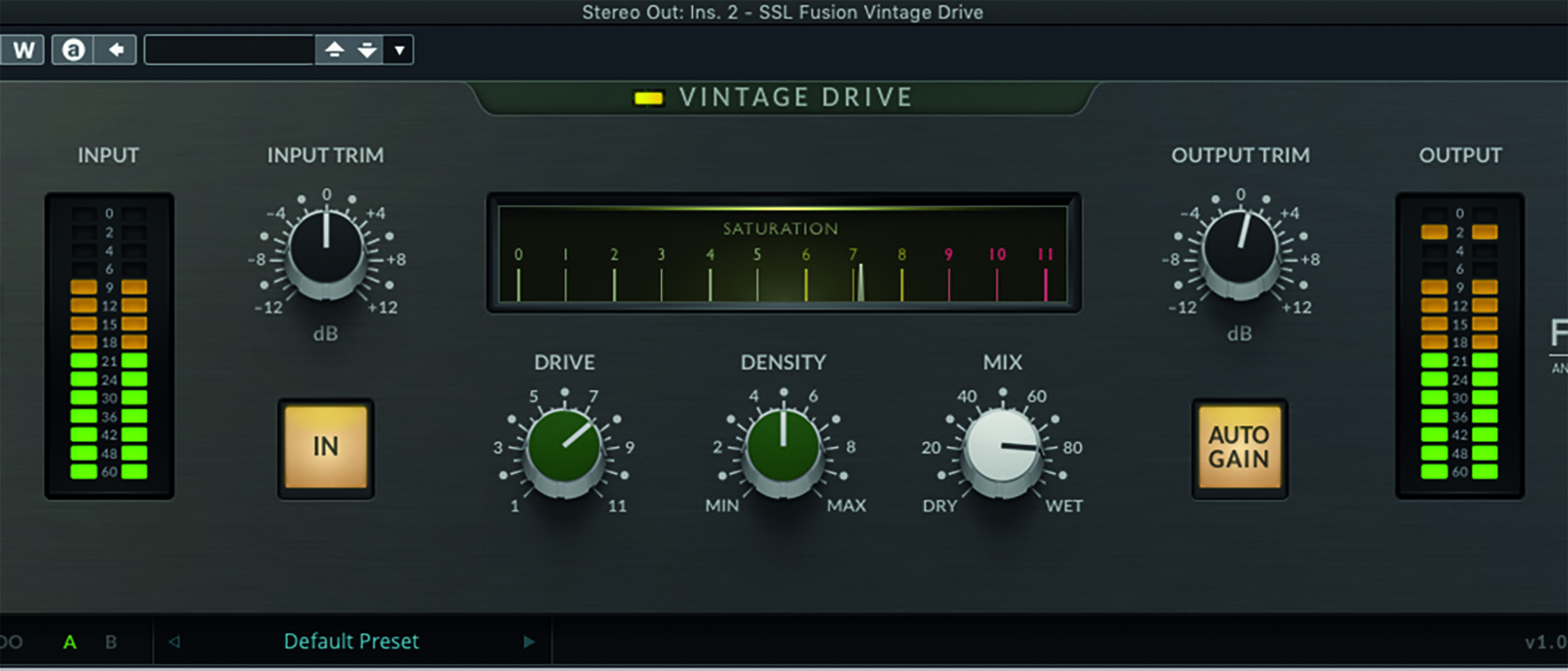MusicRadar Verdict
The first pair of processors from the upcoming suite of Fusion plugins shows SSL’s digital modelling prowess keeping pace with its analogue design mastery.
Pros
- +
Fusion’s brilliance in plugin form.
- +
Natural, convincing recreation of analogue saturation.
- +
Simple, effective stereo manipulation.
- +
Intuitive visualisation of stereo image.
Cons
- -
Window resizing.
MusicRadar's got your back
Solid State Logic Fusion Vintage Drive and Fusion Stereo Image: What is it?
Solid State Logic’s mastery of analogue audio circuitry and uncompromising commitment to quality has seen generations of music history being made using its consoles and processing tools. It’s also seen those tools become the basis for countless, digitally-modelled channel strip plugins, not all of which acknowledge the name of the giants whose shoulders they’re standing on.
Compatibility: Al major DAWs and operating systems, and support VST2, VST3, AAX and AU formats
Price: £139/€159/$199 per plugin (+25% discount for first 30 days on sale) $14.99/month as part of SSL Complete Subscription Bundle
Contact Solid State Logic
Buy from Plugin Boutique
Recognising the opportunities offered by this widespread interest in, and respect for, its hardware, SSL recently embarked on a new drive to reaffirm its commitment to not only delivering high-end professional audio plugins but also tools aimed at music creation, and to continue to add value to its Complete Subs Bundle.
The inaugural products to come out of that are a pair of plugins modelled on two of the processing stages found in SSL’s Fusion, a 2U rack unit designed to bring true analogue colour and character into the digital studio via a chain of six all-analogue processing stages.
Solid State Logic Fusion Vintage Drive and Fusion Stereo Image: Performance and verdict
Fusion Vintage Drive
The first plugin, Fusion Vintage Drive, is modelled on Fusion’s first processing stage, and brings the same non-linear saturation circuit into the digital domain. The plugin is very simple to use, with just a couple of dials – Drive and Density – to control a saturation effect that never becomes harsh or grating.
Driving the signal hard into the saturator using the Input Trim control creates a very analogue-like response, increasing the saturation without the slightest hint of digital clipping. An Output Trim control at the other end of the processor allows you to manually compensate for the plugin’s various gain-boosting stages or, if Auto Gain is engaged, allows you to trim the automatically adjusted output level.
The plugin has a saturation meter that isn’t found on the original Fusion hardware. This retro-flavoured ribbon-style meter looks great, with a long range of travel and a gentle backlighting that changes colour, from green through yellow to red, in response to the saturation level. There’s also a Mix control, which allows you to create a blend of the dry and processed signals, and an ECO mode that switches the plugin into a zero-latency reduced CPU mode, ideal when tracking.
The sound does break up and distort, but this happens in an amazingly analogue-like manner
Vintage Drive’s smooth, convincingly analogue response results in a processor that is often very gentle, but that brings fullness and cohesion to mixes and stems, and warms and fattens individual instruments. At high settings the sound does break up and distort, but this happens in an amazingly analogue-like manner, with a flabby, blown-out, over-saturated mushiness rather than a harsh distortion.
Want all the hottest music and gear news, reviews, deals, features and more, direct to your inbox? Sign up here.
The soft compression characteristics add body and weight to kicks and crispness to snares; vocals gain distinction and air, bass parts are more rounded… there really isn’t anything that doesn’t benefit from at least a tickle of Vintage Drive!

Fusion Stereo Image
Fusion’s Stereo Image processor is the next to get the modelling treatment. The processor works in the mid-side domain, but processes only the side signal, leaving the mid untouched so that it retains consistency and focus in the stereo image. The plugin’s Width dial is self-explanatory, and acts as a simple gain adjustment for the side signal, with a maximum of 6dB of cut/boost available.
This is reasonably effective just taken on its own, but the processor is also designed to take advantage of “stereo shuffling”, a technique for manipulating the stereo field that has its roots in the work of the EMI engineer Alan Blumlein, the inventor of modern stereo. In the most simple of terms, this is all about the psychoacoustic impact of lower-end frequencies within the side signal: enhancing lower frequencies will tend to smear and defocus the central core of the stereo image; reducing lower frequencies will help the core to retain its central focus, with the sense of width and space that you would get from the higher frequencies.

• bx_console SSL 4000 E
This officially licensed model will add a dose of SSL’s signature analogue sound to your sessions.
• Waves S1 Stereo Imager
Using psychoacoustic spatial imaging techniques, S1 provides clinical control over the stereo field.
In Fusion Stereo Image, then, we find dials labelled Space and Shuffle, and these control a low/low-mid EQ band which operates on the side signal. The Shuffle dial controls the frequency of the EQ, from 40Hz to 400Hz, whilst Space controls the amount of cut or boost applied at the Shuffle frequency, with a range of 12dB. The plugin also allows you to solo the side signal so that you can hear more clearly the results of your adjustments.
The plugin’s input and output meters can be switched between L/R and M/S modes, but what really stands out is the wonderful stereo image graphic, which gives one of the best stereo field visualisations we’ve ever seen. Sonically, the plugin demonstrates an almost magical ability to bring out the space and ambience in a mix or stem; doing all of this with modelled analogue circuitry only adds to the luscious character of the results.

Digital modelling vs analogue hardware
In any critical listening test, digitally-modelled analogue circuits will always fall short of the equivalent hardware, no matter how advanced or intricate the model. But with modern modelling techniques, the difference can be tricky to put a finger on: the original source hardware sounds unquestionably better, but not in a way that renders the model any less astonishing.
It’s therefore easy, when weighing-up the pros and cons of hardware vs plugin, to allow oneself to be swayed by that additional soupçon of je ne sais quoi, and thus judge digital models to be inferior.
It’s not as clear-cut as that, though, as digital plugins of course come with certain benefits that are all their own. The most obvious is the versatility of something that can be called into virtual existence within the confines of a computer, with each new instance costing nothing more than a bit of system overhead, taking up no physical space, and requiring no dedicated audio I/O.
When the quality of the modelling is as good as SSL has achieved with the new Fusion plugins, that scalable versatility is arguably preferable to the sonic benefits of hardware.
Fused together
The perpetual licence pricing for these plugins is bang-on what you’d expect, and very much worth it given how universally useful they are, with no particular preference for the style of production or genre of music they work with. SSL’s subscription bundle pricing is pretty attractive too, and will only become more so as more Fusion plugins are released over the coming months.
If we were forced to find fault, we’d say that the plugin windows are a bit on the large side, and so would benefit from being resizable, but this is a minor niggle. From the Solid State Logic badge, through the wonderfully convincing analogue modelling, to the sumptuous, expensive-sounding sheen that they add to your music, these plugins exude true SSL quality from every pore.
MusicRadar verdict: The first pair of processors from the upcoming suite of Fusion plugins shows SSL’s digital modelling prowess keeping pace with its analogue design mastery.
Solid State Logic Fusion Vintage Drive and Fusion Stereo Image: The web says
"These are two well thought out plugins designed to do powerful work in an extremely flexible way."
SonicScoop
Solid State Logic Fusion Vintage Drive and Fusion Stereo Image: Hands-on demos
Solid State Logic
Michael White
Synth-Presets Steve
Solid State Logic Fusion Vintage Drive and Fusion Stereo Image: Specifications
- Compatible with all major DAWs and computer operating systems, and support VST2, VST3, AAX and AU plug-in formats.
- £139 / €159 / $199 per plugin (+25% discount for first 30 days on sale) $14.99/month as part of SSL Complete Subscription Bundle.
- CONTACT: Solid State Logic
Computer Music magazine is the world’s best selling publication dedicated solely to making great music with your Mac or PC computer. Each issue it brings its lucky readers the best in cutting-edge tutorials, need-to-know, expert software reviews and even all the tools you actually need to make great music today, courtesy of our legendary CM Plugin Suite.

